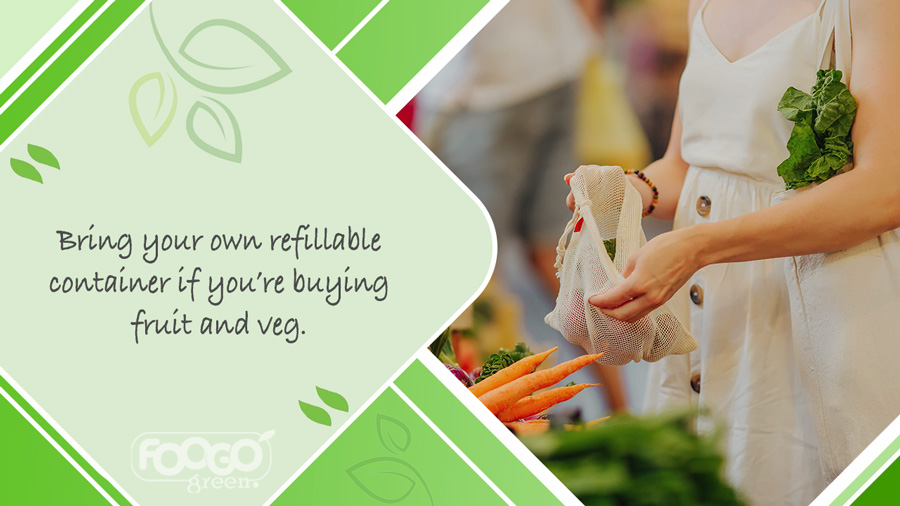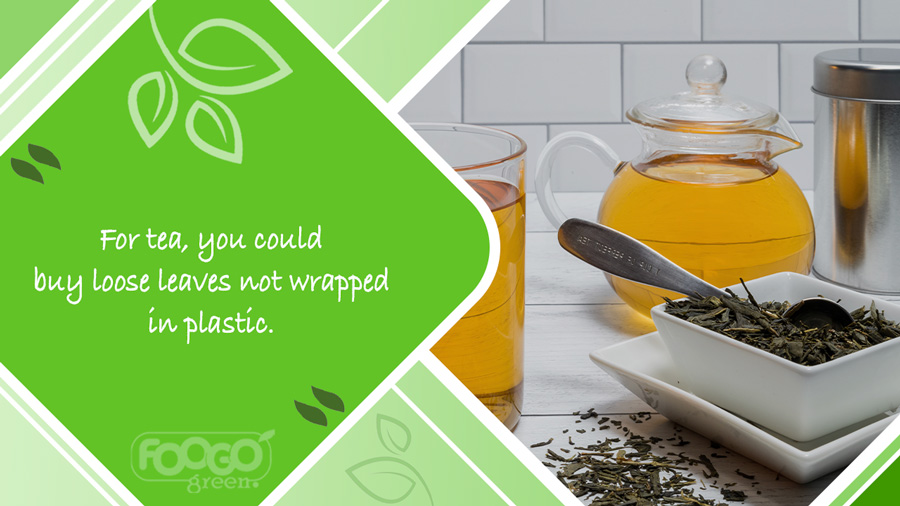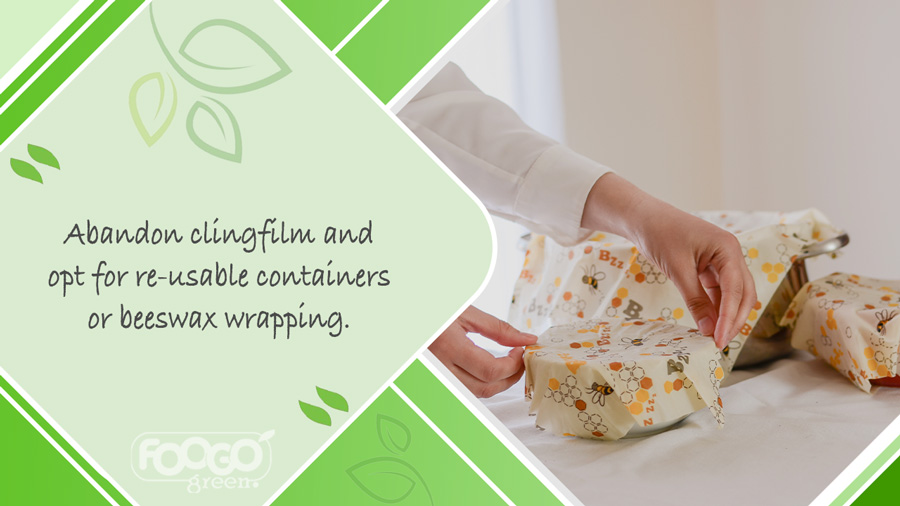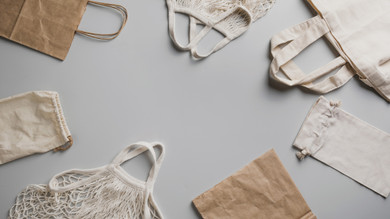We’ve all seen images of beaches covered in plastic, and wildlife caught up or injured by plastic waste. Many of us do our bit to ensure we use less plastic. However, domestic recycling alone is not enough.
If we’re going to tackle pollution, we need to do more. We’ve included some ideas below.
Plastic-free grocery shopping
If you’re going shopping, always take your own bag. For online supermarket deliveries, make sure you tick the ‘no bags’ option.
Investigate which shops allow you to bring your own refillable container – e.g. if you’re buying fruit and veg, or something from a salad bar. Farmers markets are generally great for this.

Find out which shops are using environmentally friendly packaging. If you’re replacing a consumable item, like a toothbrush, look for a more sustainable alternative. For example, bamboo toothbrushes are increasingly available in shops.
If you’re shopping for staple items, like tea bags, consider the options. For tea, you could buy loose leaves not wrapped in plastic. This means using a strainer and a traditional teapot instead of brewing in a mug.
And while you’re adding milk to your hot brew, consider switching from supermarket plastic cartons to milk bottles. The ‘milkman’ is making a come back in many areas. They often provide glass bottles, which means you can rinse your bottles and pop them out on your doorstep for collection.
If possible, try buying in bulk. It can save money in the long term and results in less plastic packaging. See what you could buy more of and then store until you need it.
Avoiding plastic used in toiletries and cosmetics
Shampoo bottles, disposable razors, plastic-wrapped toilet rolls: they all contribute significantly to household plastic waste.
Make a list of the most common toiletries you buy and evaluate how much plastic is involved. Gradually make a shift: replace disposable razors with a re-useable one, buy bars of shampoo, soap, or deodorant.
It’s worth doing a little research. Some beauty product providers have stopped using plastic packaging. These may often be small, independent brands, so you’ll likely be supporting local enterprise. The products themselves may also be made with natural ingredients, which will be kinder to your body and the environment.
Finally, rethink sanitary products. There are now an increasing number of alternatives made from less plastic, and which come with less plastic packaging.

Your plastic-free daily routine
It’s easy to buy a takeaway coffee or a bottle of water on the way to work. It’s easier to bring your own reusable cup or water bottle.
If you regularly buy a takeaway lunch, get into the habit of bringing your own sustainably made cutlery, like birchwood forks and spoons. They’re lightweight and easy to slip into your bag.
For packed lunches, abandon clingfilm and opt for reusable containers or beeswax wrapping.
Finally, many of us have got used to using hand sanitiser frequently throughout the day, before or after a meal. However, nearly all public dispensers are in a plastic container. Take your own in a reusable bottle.
Reducing plastic used in the manufacture and sale of clothing
Much has been said about our throwaway culture when it comes to clothing, and the urgent need to reduce demand.
Every time we replace an item of clothing, the new item often comes with some form of plastic. Mend, alter, repair and reuse clothing, or find someone who can do alterations for you.
In addition, in a post-Covid world, make sure you use a washable and reusable face mask, should you choose to wear one.

Entertaining in an eco-friendly way
If you’re serving drinks, food, or nibbles to guests, opt for reusable or sustainably made tableware. In addition to being more attractive than plastic goods, palm leaf plates, bowls and platters are biodegradable and sustainably produced.
Use sustainable tableware with cotton table clothes and napkins to keep your plastic use to the minimum. Or if it’s a picnic you’re planning, take biodegradable sugarcane plates and wooden cutlery rather than plastic ones.
Little steps can make a big difference
Even if you only manage one or two of the above ideas, it can still make a difference. If it still seems too much, just make one change at a time.
If we each take responsibility and choose simple alternatives, we can turn the tide on plastic.
For more information on reducing your plastic usage, our blog contains a variety of useful resources. For example, check out how we planned our approach to Plastic-Free July.
Thinking of hosting? Our guide to throwing a plastic-free party may be just what you need.
And when you’re ready to stock up on environmentally friendly catering supplies, our online shop can provide you with a range of essentials.

